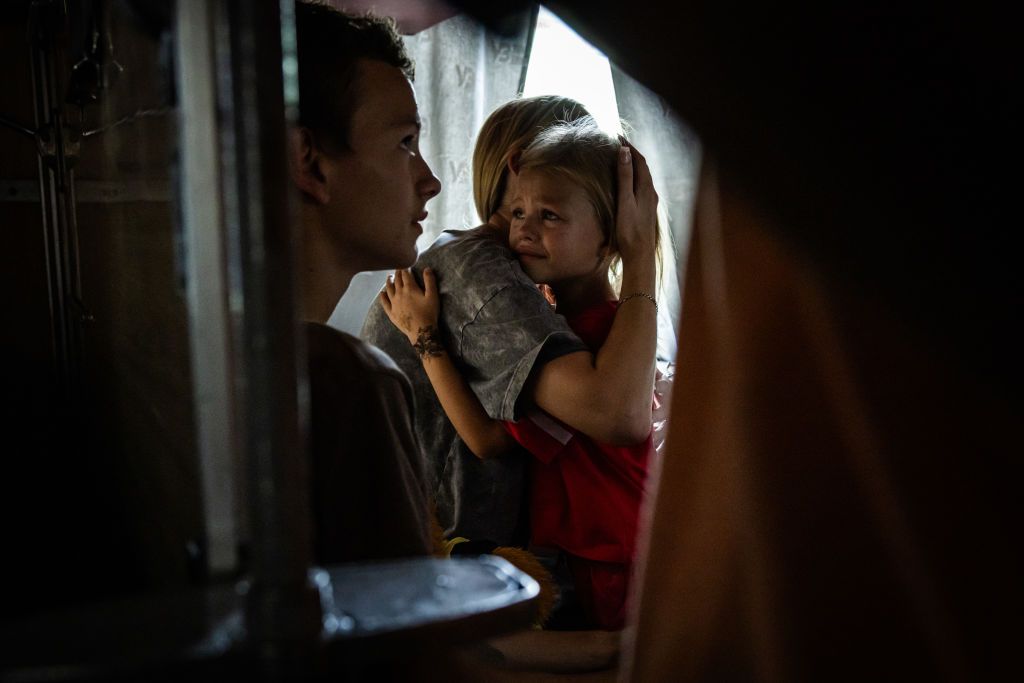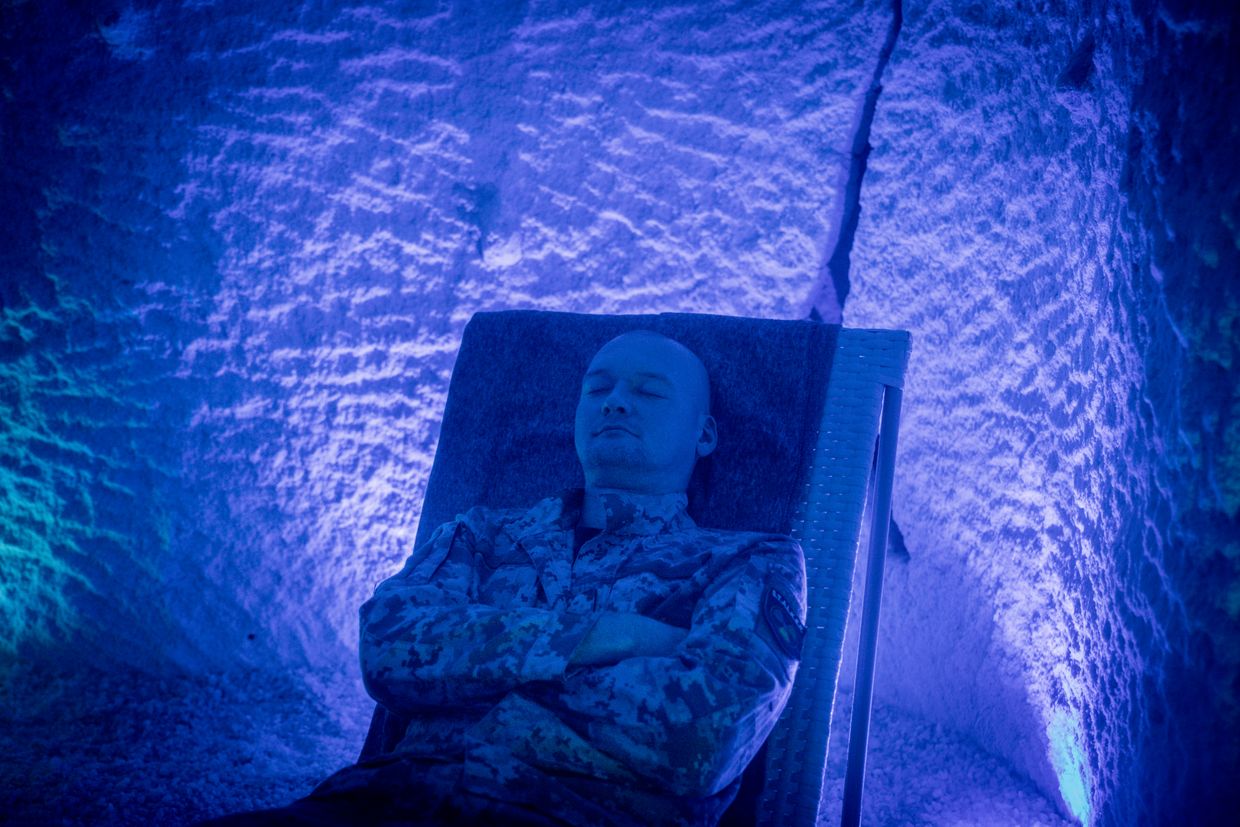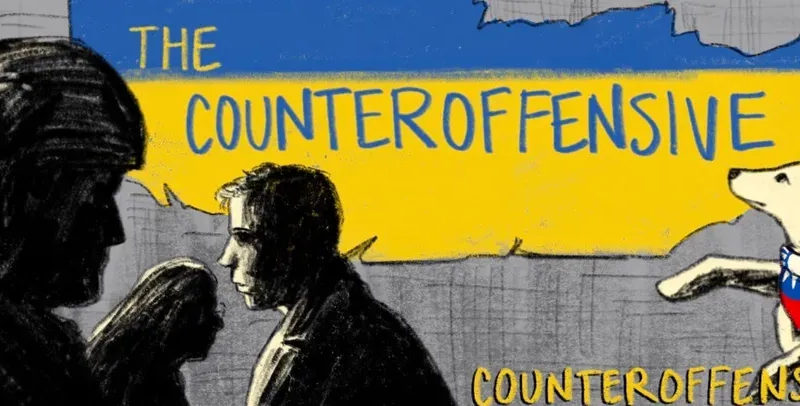The Counteroffensive: An inside look at virtual reality therapy that is transforming veterans’ rehabilitation.
Editor’s Note: This article was published by the weekly newspaper “The Counteroffensive with Tim Mak” on Oct. 17, 2024, and republished by Kyiv Independent with permission. To subscribe to The Counteroffensive, click Here.

Last year, Mykola Horishnyi was declared dead – twice. A Ukrainian soldier lost a lot of blood due to an explosion, possibly a Russian mine.
“Tomorrow I will mark exactly one year since my injury – at 4:45 in the evening I still do not fully understand that all this happened to me and that I am no longer in the trenches,” Mykola told The Counteroffensive.
Mykola suffers from PTSD, which makes it difficult for him to talk about the traumatic events he endured. He recently started psychotherapy at a rehabilitation center in Kyiv’s Borodianka district, a unique pioneer of real therapy.
The Ministry of Health of Ukraine reported in August that the number of people struggling with mental health problems will double by 2023. Market research data shows that sales of antidepressants have increased by more than 50% while compared to the year before the war in 2021, according to the BBC. .
Typically, about 15% of people develop PTSD after experiencing traumatic events of violent conflict or war. Many can overcome its effects with the right professional help, although traditional treatment is not always successful.
The rise in mental health problems suggests a major social crisis after the war, as hundreds of thousands of soldiers try to return to civilian life in peacetime. To solve these problems, technology developers are experimenting with new types of virtual reality (VR) therapy.
“If it wasn’t for our doctors, we wouldn’t be talking now,” said Mykola.
Comment: Trading places mean selling people
The following comments accompany the recently released article “Shadows Across the River” by the Kyiv Independent’s War Crimes Investigations Unit. Watch the documentary by clicking here. “Let Russia stay in control of the occupied Ukrainian territories to finally end this war!” This edition,…

For Mykola, it all started when he volunteered to join the army in February 2023.
“I wanted to be sent to the front line in the east, to reach Crimea, to return our Crimea, and that’s it. But of course, it didn’t work as expected,” he said.
It’s been a year since Mykola was injured, but the memories still haunt him.
“I still don’t fully understand that this is my reality now, that I’m no longer in the trenches, running around, in stormy places. When I close my eyes or sit alone, I feel like I’m still there. I see the trenches in my sleep – these bad dreams don’t leave me,” said Mykola.
Mykola is currently receiving treatment and respite services at the Borodianka Center for Social and Mental Rehabilitation. The center is one of the few places in Ukraine actively developing VR therapy.
VR exposure therapy has shown promising therapeutic properties.
“It’s hard to think of many mental health conditions that it wouldn’t benefit from. We are working on treatments for many conditions,” Daniel Freeman, a professor at Oxford University, told the BBC.

The therapist is always there to provide support, but the main goal is to relive traumatic memories to help the patient overcome stress and fear.
“Our brain is built in such a way that it doesn’t really see the difference between physical reality and physical reality. Virtual reality helps to return a person to familiar thoughts and feelings by immersing them in a virtual environment,” said Yevhen Kotukh, a Ukrainian VR expert who continues to develop this technology.
Yevhen and his team are working to develop new technology for the rapid diagnosis of PTSD.
They plan to use virtual reality to evoke emotional responses in war veterans by showing a two-minute simulation of combat operations. Signals from the brain can help determine whether a person has PTSD.
Currently, the VR technology at the center is in the early stages of development, but the team is actively working with suppliers and partners to improve it.
It is expected that a typical treatment will require about ten sessions of 50 minutes each, carried out every week. When the course is over, the person’s sensitivity to stress should decrease to a manageable level. Finally, VR therapy can help more than two-thirds of people with PTSD when used in conjunction with a psychologist.
Traditional exposure therapy – where the therapist creates a safe environment and exposes the patient to their fears – may not be suitable for everyone and has its limitations.
Opinion: Russia’s opposition needs to stop blaming Putin and start confronting Russia’s legacy of violent imperialism.
“What good is a world without Russia in it?” asked a well-known politician, now a wanted war criminal, back in 2018. Another non-prominent Russian echoed this sentiment in 2024, albeit less alarmingly. he said, “The breakup of Russia would be a disaster, not only for

First, it takes time to integrate a soldier and begin to process traumatic events. Second, the old person’s memory and memories may not be adequate to deal with the trauma. Additionally, it can be difficult for people to be comfortable and open about painful memories.
Currently, active collaboration with foreign partners is underway to create a special room with sensors that allow for free movement, improving the authenticity of the VR experience.
In addition to cognitive support, VR helps with phantom pain for those who have lost their hands but can still feel pain in the amputated areas. Mykyta Makazan, who was a soldier who had his leg amputated, faced this problem. He said that sometimes the pain was so intense that it was difficult to get out of bed.
With sensors attached to the muscles of his missing legs and virtual reality games designed to improve motor skills, he can rewire his brain to believe that the leg he is moving in the game is his own. This method helps him move the muscles and stretch them, reducing the phantom pain. The goal of real-life therapy is to relieve the pain you are actually experiencing.
As Mykola talked about the nightmares that were still bothering him, his smile faded. To change the conversation, I asked her about the things that bother her, and she smiled.
“Family. Home, habit, conversation – when my wife comes home from work and we talk, when we go, this center in Borodianka, “Mykola said.
All experiencers must receive such support and assistance on their difficult paths to physical and mental recovery.
Editor’s Note: The views expressed in the op-ed section are those of the authors and do not necessarily reflect the views of the Kyiv Independent.
#Counteroffensive #virtual #reality #therapy #transforming #veterans #rehabilitation
